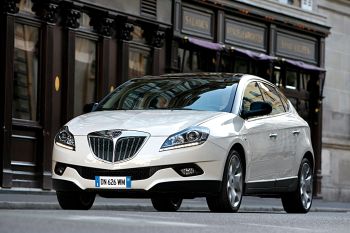
 |
|
Fiat Group Automobiles is to benefit from
a significant advancement in suspension technology developed
by Magneti Marelli which is scheduled to be progressively
introduced across models starting with Lancia's Delta and
Alfa's Mi.To. |
|
|
|
Fiat Group Automobiles is set to
benefit from a significant advancement in suspension
technology, which is scheduled to be progressively
introduced across many of the group’s models. Having
been developed over a considerable length of time, the
technology promises a real step forward in improving
body control, handling and ride, and will initially be
applied to two of the group’s most important new models,
the Lancia Delta and Alfa Romeo MiTo.
Synaptic Damping Control (SDC) is a
brand-new Mechatronic development by Magneti Marelli’s
suspension division. It aims to improve a car’s body
control, allowing the suspension to work more effectively
and thus improving roadholding and handling. The net result
is a real improvement in the vehicle’s dynamic performance,
by reducing the compromise between comfort and
sport-oriented setups.
Fiat Auto has previously employed
adjustable dampers, notably on models such as the Lancia
Dedra Turbo and Alfa Romeo 155 Q4, both of which ran a
two-mode damping system. However, SDC takes the concept a
step further. Like previous efforts, it is based around the
premise of an electronically-adjustable damper system; but
new developments have allowed each damper to be fitted with
an electro-valve that adapts to the passage of damping fluid
in real time. This allows the response to be adjusted
continuously in accordance with various parameters,
including those from the relevant sensors.
The system consists of four adjustable
dampers, an electronic control unit (ECU), embedded software
control strategies, five acceleration sensors, a CAN node
connection, and a Sport/Comfort configuration switch. The
proportional electro-valves in the dampers are able to
continuously vary their characteristics from a minimum to a
maximum curve, with a switching time between 10 and 20
milliseconds. When the current is varied between 0.29 and
1.6 ampere, the electro-valves adjust the shock absorber
internal flows between the maximum and the minimum
force-speed curve, with the system keeping an intermediate
fail-safe position at 0 ampere.
The ECU is based on a 32-bit
microprocessor with high computational performance and
high-speed clock (80 MHz). With up to nine sensors, six
proportional valves and four on-off valves, alternative
system configurations are possible; customer proprietary
software packages can also be ‘plugged-in’ to the ECU’s
high-level software layer.
Magneti Marelli says that the system is
able to identify the driving conditions, including the
condition of the road itself, and automatically adjust the
damping accordingly. The effects are significant. In
addition to improved ride comfort, there is a marked
reduction in body roll; braking distances are also reduced
by up to five per cent as a result of improved individual
wheel control, all of which allows both a safer and more
comfortable drive.
According to Marelli, the modular control
architecture includes modal Sky-hook, Lateral Dynamics,
Longitudinal Dynamics, Hole passing and Road Severity
Identification. The software architecture is also structured
to encourage easy integration of an OEM’s IP software
modules and a high degree of hardware platform independence,
depending on customer experience.
Synaptic Damping Control is set to debut
as an option on the Lancia Delta, dubbed ‘Reactive
Suspension System’. When the driver selects the ‘Sport’
setting, the dampers reset to a stiffer setting to reduce
body roll and increase precision; the steering also becomes
heavier and more communicative. In addition, on models
equipped with SDC and the 150bhp 1.4 TurboJet engine,
selecting ‘Sport’ sharpens throttle response and unleashes
an additional 24Nm of torque. Finally, if the car is a 1.8
TurboJet model fitted with the AT6 six-speed automatic
gearbox, the shifting pattern is altered to a sports
program, with a corresponding decrease in shifting time.
The Reactive Suspension System will work
in concert with the Delta’s Absolute Handling System, which
Lancia describes as a ‘new generation’ of ESP. It consists
of a number of elements, including TTC (Torque Transfer
Control), an electronic device which simulates the presence
of a mechanical self-locking differential which, says
Lancia, “improves traction (in corners), noticeably
diminishing understeer and ensuring more dynamicity in the
drive”. In co-ordination with other aids such as LTF
(Linearization Torque Feedback) and OCF (Oversteer Control
Function), these features aim to improve control and driving
pleasure.
|